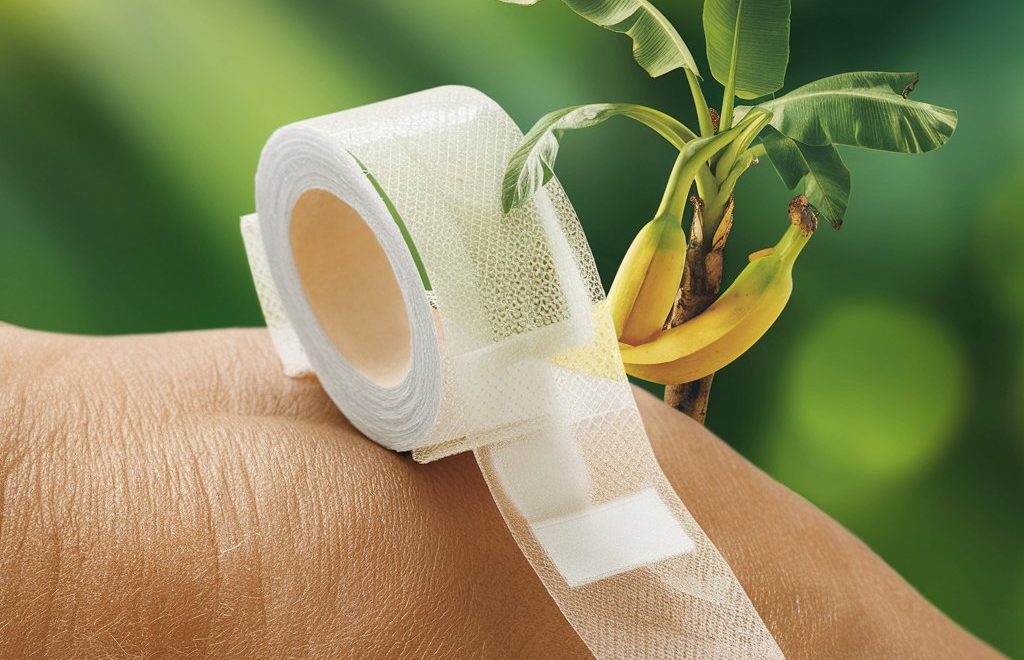Introduction
In the field of medical care, the materials used for wound dressings are crucial for proper healing and protection. Traditional dressings made from synthetic materials can lead to allergic reactions, environmental issues, and high costs. Therefore, researchers are seeking natural and sustainable alternatives. One such promising innovation is wound dressing tape made from banana fibers.
The Science Behind Banana Fiber
Banana fiber is derived from the pseudostem of banana plants, which is typically discarded after fruit harvest. This fibrous material is noted for its strength, biodegradability, and abundance; especially in regions like Southeast Asia, India, and parts of Africa.
Properties of Banana Fiber
- Biodegradability: Banana fibers naturally decompose, minimizing their environmental impact.
- Strength and Durability: These fibers are lightweight yet strong and resilient, making them ideal for protective applications.
- Breathability: The natural structure of banana fibers allows air to circulate, promoting faster wound healing by maintaining optimal moisture levels.
- Antibacterial Properties: Some studies indicate that banana fibers have inherent antibacterial properties, which can help reduce the risk of infection.
Manufacturing Process
Creating medical wound dressing tape from banana fibers involves several steps:
- Harvesting: Banana pseudostems are collected after the fruiting period.
- Fiber Extraction: Fibers are extracted mechanically, separating them from the plant’s non-fibrous material.
- Cleaning and Treatment: Extracted fibers are cleaned and treated to remove impurities and enhance their properties.
- Weaving and Bonding: Fibers are woven into fabric or bonded to form cohesive tape.
- Sterilization: The final product is sterilized to ensure it is safe for medical use.
Benefits of Banana Fiber Wound Dressing Tape
- Eco-Friendly: Using banana fibers helps reduce agricultural waste and dependence on synthetic materials.
- Cost-Effective: Banana fibers are inexpensive and readily available, potentially lowering the cost of medical supplies.
- Enhanced Healing: The breathable and antibacterial nature of banana fibers supports a healthier healing environment.
- Reduced Allergic Reactions: Natural fibers are less likely to cause skin irritation and allergies compared to some synthetic alternatives.
Breakthrough Development by IASST
In a significant advancement, scientists at the Institute of Advanced Study in Science and Technology (IASST) in Assam have developed a sustainable and cost-effective wound dressing material using banana fibers. Led by Prof. Devasish Chowdhury and Prof. (Retd) Rajlakshmi Devi, the team utilized banana pseudostems, which are usually discarded after harvest. By blending these fibers with biopolymers such as chitosan and guar gum, they created a versatile patch with remarkable mechanical strength and antioxidant properties.
To boost its therapeutic potential, the patch was infused with an extract from the Vitex negundo L. plant, demonstrating its effectiveness in vitro for drug release and antibacterial activities. The team emphasized that all materials used are natural and locally sourced, ensuring a streamlined manufacturing process that is both cost-effective and safe.
Prof. Chowdhury stated, “This research opens a new chapter in wound healing, providing a low-cost, reliable, and environmentally friendly alternative with significant potential in biomedical research.”
The study, published in the International Journal of Biological Macromolecules, highlights the transformative impact of the banana fiber-biopolymer composite dressing on wound care. Its wide-ranging applications could revolutionize healthcare practices and promote positive environmental outcomes.
Challenges and Future Directions
Despite its potential, using banana fiber wound dressing tape faces challenges such as:
- Consistency in Quality: Ensuring uniform quality of fibers can be challenging due to variations in banana plant species and growing conditions.
- Scalability: Developing large-scale production methods that are economically viable remains a hurdle.
- Market Acceptance: Gaining acceptance in the medical community and among patients requires extensive testing and validation.
Future research and development efforts are focused on addressing these challenges. Innovations in processing techniques and further clinical trials could solidify the role of banana fiber wound dressing tape in medical care.
Conclusion
Banana fiber wound dressing tape represents a promising advancement in medical materials, combining sustainability with functionality. Its development aligns with global efforts to create more environmentally friendly and effective healthcare solutions. As research continues, this natural alternative could become a staple in wound care, benefiting patients and the planet alike.



Leave a Comment